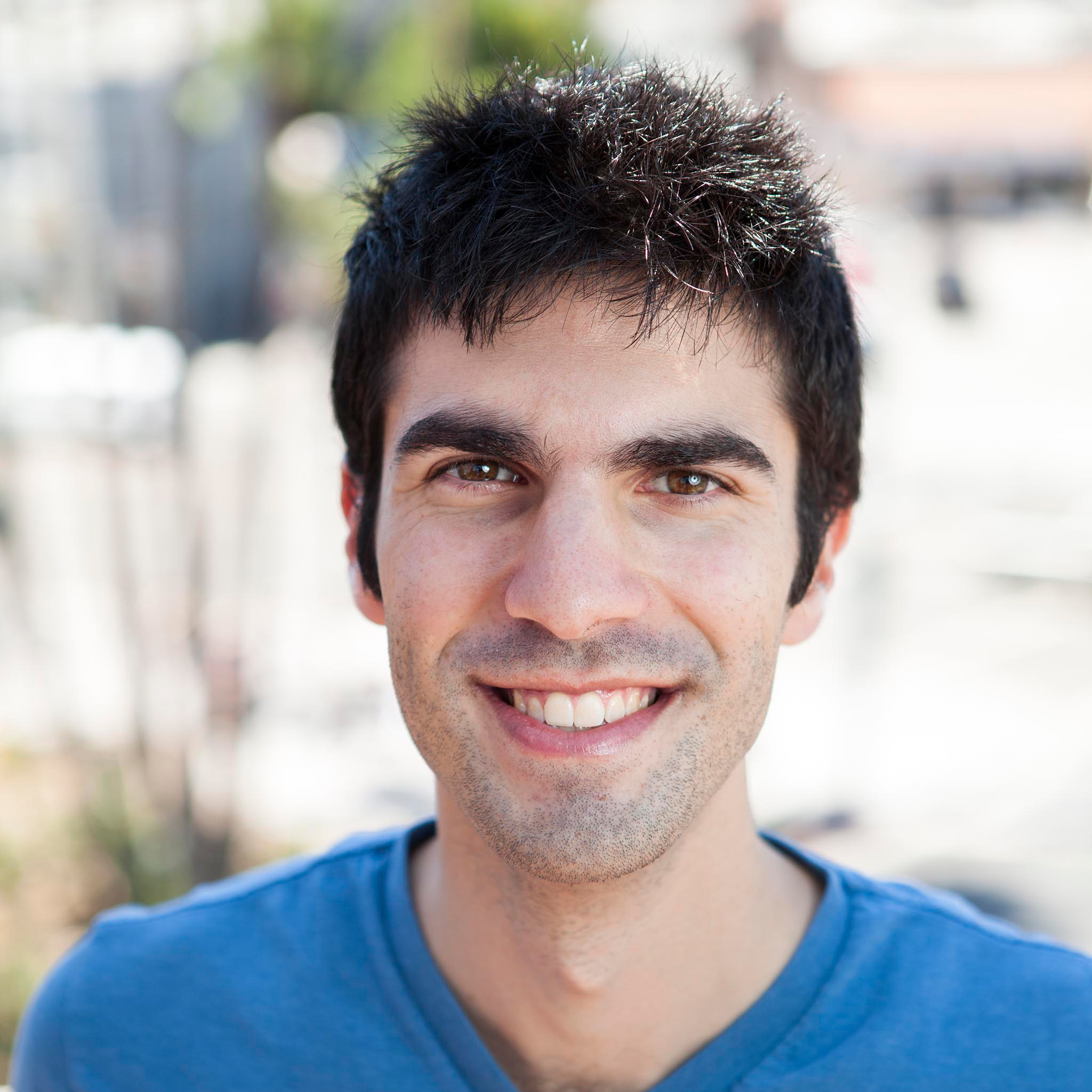Amid the 500-plus comedy shows that Netflix is a Joke Fest has brought to L.A., stand-up John Mulaney is hosting a late-night-style talk show that airs live on Netflix throughout this week.
John Mulaney Presents Everybody’s in L.A. streamed its first episode last Friday, and its oddball mix of banal city life scenes and celebrity interviews truly tapped into the singularly weird and wonderful sensation of life in L.A.—“the city that confuses and fascinates me” as Mulaney put it in the intro. In the first of six episodes, Tony Tucci, codirector of Citizens for Los Angeles Wildlife, shared the interview couch with Jerry Seinfeld, who was busy complaining about L.A. traffic. On-location segments covered everything from fishing in Echo Park Lake to a cement mixer stuck in the mud, there was a call-in block about coyotes and the rest of the guest lineup included Ray J, St. Vincent and, uh, a food delivery robot.
After a title sequence with shots of sunsets and freeways, a sidewalk trompo and the one-eyed Minion by the 101 (all set to Wang Chung’s “To Live and Die in L.A.”), Mulaney walked into an Encino-meets-Topanga living room set and pulled down a map to roast LAPD response times, dunk on Downtown L.A. and answer a question that we too grapple with all the time: What do we mean by “L.A.”?
“Well look at this beautiful organic shape, not at all cynically designed to go down to the harbor,” he said as he started to dive into the City of L.A.’s irregularly shaped borders. But here’s where we need to pause in the name of pedantry to step all over this elegantly delivered comedy bit.

Though the map—broken down by neighborhoods—is ostensibly of the City of Los Angeles, you’ll find a handful of labels for areas that are surrounded by but not actually part of the City of L.A.: Santa Monica, Beverly Hills, West Hollywood, Culver City and San Fernando. We’re willing to cut the mapmakers some slack, though: They’ve seemingly acknowledged these separate, encircled-by-L.A. cities by coloring them in the same shade of purple, as well the unlabeled carve-outs for the unincorporated areas of Universal City and the VA. But at the same time, Baldwin Hills (a neighborhood within the City of L.A.) has been given that same purple shade and a ton of land that’s actually part of Culver City. On the other hand, Marina del Rey, part of unincorporated L.A. County but encircled by the City of L.A., has either been ignored or given its own label-less gray shade.
Now if we can really ruin the comedy, we have to point out some of the faulty neighborhood borders, too. West Los Angeles has swallowed up Century City and a handful of other neighborhoods to the east while Koreatown has been put on a diet. The boundaries for Northeast L.A.’s neighborhoods are the equivalent of a shrug emoji. Central City East (the official name for Skid Row) has been stretched to include everything between Alameda Street and the L.A. River as far north as Dodger Stadium. “They took time to think of little cute names for every area and then they got down here and went ‘South Los Angeles,’ ‘Southeast Los Angeles,’ Mulaney said in the bit—except, those regions do indeed have smaller neighborhoods within them.
We could go on but we’ll stop there because here’s the thing: These sorts of slipups are actually entirely on-brand for Angelenos. Think about how many people you know (and maybe you’re even one of them) who don’t consider the Valley to be a part of L.A. (it is). Just the other day, we heard someone in Santa Monica (not in the City of L.A.) complain about a friend referring to Eagle Rock as part of L.A. (it is). And let’s be honest, do you really know off the top of your head whether San Fernando (the neighborhood, not the valley) is part of the City of L.A. or not? (It isn’t.)
This map—unlike most Angelenos—correctly labels Mid-City, a neighborhood just north of the 10—and then—like most Angelenos—lumps Fairfax and Beverly Grove into a second Mid City (no hyphen this time). With 88 cities in Los Angeles County and even more neighborhoods within the City of L.A., these sorts of blunders are inevitable, especially for a city that, as Mulaney points out in his intro, is basically only united by its lack of community (that and the likelihood of seeing a coyote, the theme of the first episode).
View this post on Instagram
Mulaney summed up the idiosyncrasies of L.A.’s neighborhood names with this memorable chunk of his opening monologue:
“If you saw someone making a movie in the city of Los Angeles, it would probably be in Studio City, which is not a city, it is a neighborhood. In the same way that Koreatown is not a town, it’s a neighborhood. In the same way Silver Lake is not a lake, it’s a reservoir. In the same way that Los Feliz translates to ‘the happy ones,’ but it is, in fact, filled with very unhappy people.”
The show’s eight credited writers, Mulaney among them, clearly have a level of understanding of L.A. that penetrates the usual late-night formula of industry bubble barbs. And for that alone—and maybe some more messy maps—we’ll be tuning in each night.
John Mulaney Presents Everybody’s in L.A. streams live on Netflix each night from May 6 through 10 at 7pm.

